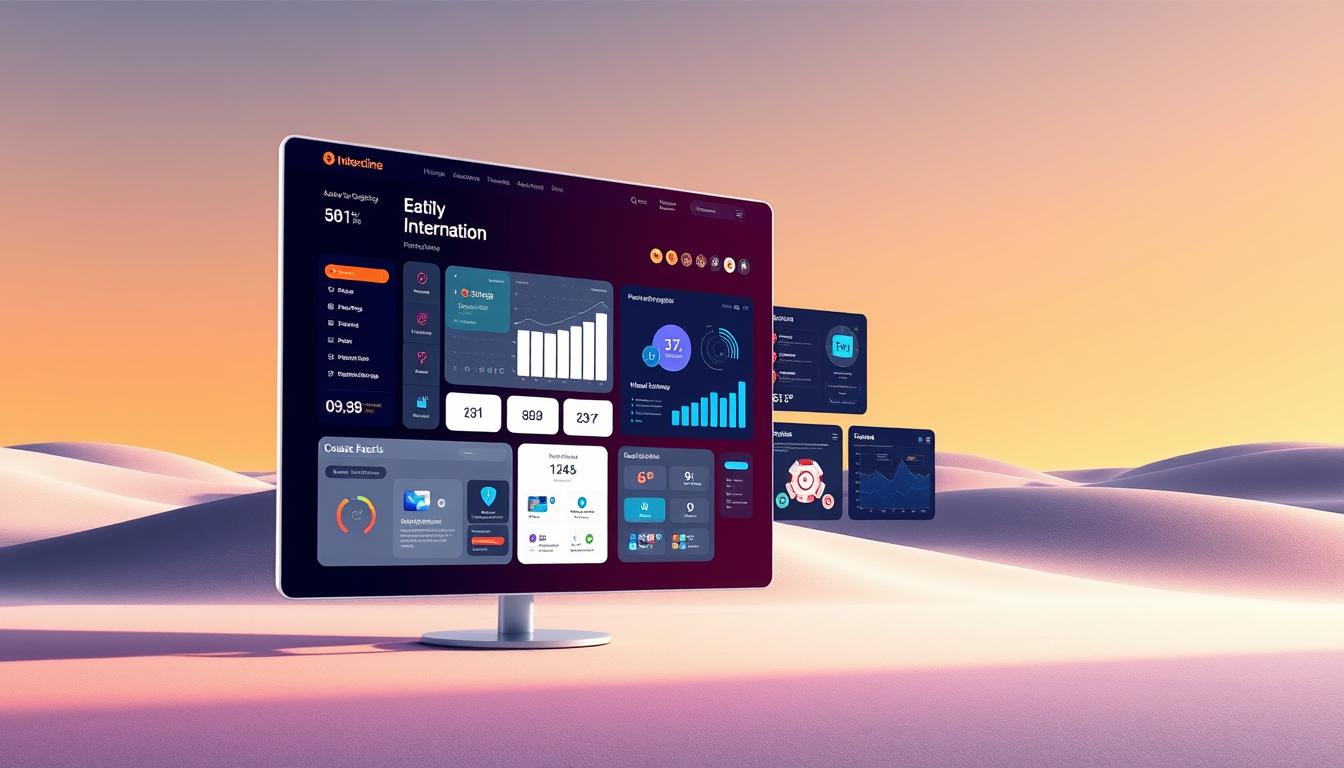In today’s competitive digital landscape, simply having a website isn’t enough. A static website may convey your message, but it lacks the engagement and interactivity that can keep users on your site longer and encourage them to return. Interactive web design techniques have become increasingly important to provide users with an immersive, dynamic, and engaging experience. These techniques can transform your website from a passive browsing experience into an interactive journey that grabs attention and drives user engagement.
In this article, we’ll explore several key interactive web design techniques that can significantly enhance your website’s user experience, boost engagement, and ultimately improve conversions.
1. Microinteractions: Small Details, Big Impact
What It Is: Microinteractions are small, subtle animations or design elements that respond to user actions, such as clicking, scrolling, or hovering. They include things like buttons changing color when hovered over, animated checkboxes, or progress bars that move as a user completes a task.
Why It Matters:
- Engagement: Microinteractions provide immediate feedback, keeping users engaged and reinforcing their actions.
- Improved UX: They create a more dynamic, intuitive user experience by guiding users through interactions in a non-intrusive way.
- Delight Factor: Small, delightful animations can create a positive emotional response, improving users’ overall perception of your brand.
Best Practices:
- Use microinteractions to highlight important actions, such as submitting a form, completing a purchase, or liking content.
- Keep animations simple and fast to avoid distractions and enhance usability.
- Test to ensure microinteractions don’t slow down your website or cause performance issues.
2. Interactive Forms and Surveys
What It Is: Interactive forms and surveys make the data collection process more engaging and user-friendly. Unlike static forms, interactive forms provide dynamic feedback, guiding users through the process and making it more engaging. You can include progress bars, instant validation, or even gamification to make filling out forms more enjoyable.
Why It Matters:
- Higher Completion Rates: Engaging forms encourage users to complete them, increasing the chances of conversions, sign-ups, or leads.
- Better User Experience: Interactive forms give instant feedback, such as showing a green checkmark when fields are correctly filled out, which keeps users on track.
- Personalization: By customizing questions based on users’ responses, you can create a more personalized experience that makes users feel more connected to your brand.
Best Practices:
- Use multi-step forms to break down large forms into smaller, manageable parts.
- Provide real-time validation and feedback to help users understand if they’ve made an error before submitting the form.
- Make use of visual cues like progress bars or animations to show the user’s progress.
3. Hover Effects for Interactive Feedback
What It Is: Hover effects trigger changes in elements when a user moves their cursor over them. These can range from simple color changes to more complex animations or transitions that provide visual feedback to users, helping them understand that an element is interactive.
Why It Matters:
- Enhanced Visual Appeal: Hover effects make the website feel more dynamic and responsive, improving the overall aesthetics.
- Clear Interaction Cues: Hover effects signal to users that they can interact with specific elements, like buttons or links, increasing engagement.
- Increased Conversions: Interactive elements that change on hover can attract attention and encourage users to click, leading to higher conversions.
Best Practices:
- Use hover effects on clickable elements like buttons, links, and images to show users that they are interactive.
- Keep the animations subtle to avoid overwhelming users. A slight color change or shadow effect is often enough.
- Test hover effects on both desktop and mobile devices to ensure usability across platforms.
4. Parallax Scrolling: Creating Depth and Movement
What It Is: Parallax scrolling is an effect where background images move at a slower pace than the content in the foreground, creating an illusion of depth and movement as users scroll down the page. This technique can make your website feel more immersive and visually interesting.
Why It Matters:
- Increased Engagement: The visual appeal of parallax scrolling grabs users’ attention, encouraging them to explore your website further.
- Modern Aesthetics: Parallax scrolling gives your website a sleek, contemporary feel, making it stand out from competitors who use traditional scrolling designs.
- Storytelling: Parallax scrolling can be used creatively to tell a visual story as users scroll through your site, creating an engaging narrative experience.
Best Practices:
- Keep the movement subtle to avoid overwhelming users or causing motion sickness.
- Use parallax scrolling on pages where the content benefits from visual storytelling, such as landing pages or portfolios.
- Ensure that parallax effects don’t negatively impact loading times or mobile performance.
5. Dynamic Content Loading (Infinite Scroll)
What It Is: Dynamic content loading, often referred to as infinite scroll, is a technique where new content automatically loads as a user scrolls down the page. This eliminates the need for users to click on “Next” or “Load More” buttons, creating a smooth and continuous browsing experience.
Why It Matters:
- Improved User Engagement: Infinite scroll keeps users engaged by providing a continuous flow of content, encouraging them to stay on your site longer.
- Mobile-Friendly: Infinite scroll is particularly beneficial for mobile users, as it eliminates the need to load multiple pages or tap buttons.
- Increased Conversions: By keeping users engaged with a continuous stream of content, you increase the chances of conversions or interactions with your site.
Best Practices:
- Use infinite scroll for content-heavy websites like blogs, product listings, or social media platforms.
- Include a “Back to Top” button to make navigation easier for users who’ve scrolled down significantly.
- Provide a clear indication when new content is loading to avoid frustrating users.
6. Interactive Maps and Data Visualizations
What It Is: Interactive maps and data visualizations allow users to interact with data in a meaningful way. For example, a map may allow users to zoom in and out or click on specific locations for more detailed information. Data visualizations may let users filter or customize the data being displayed.
Why It Matters:
- User Engagement: Interactive maps and visualizations make data more interesting and engaging, encouraging users to interact with your content.
- Better Understanding: Users can explore information at their own pace, enabling them to digest complex data more easily and understand it in a more personalized way.
- Improved Conversion Rates: For businesses, interactive maps and data visualizations can help users make more informed decisions, such as locating a store or evaluating product features.
Best Practices:
- Ensure that interactive maps and visualizations are easy to use and offer clear instructions.
- Keep the user interface clean and simple to avoid overwhelming users with too much information.
- Make sure that interactive elements are mobile-responsive and accessible to all users, including those with disabilities.
7. Gamification: Turning User Engagement into a Game
What It Is: Gamification involves applying game-like elements to your website design, such as badges, points, progress tracking, and challenges. Gamifying certain aspects of your website can make the user experience more enjoyable and motivate users to take specific actions.
Why It Matters:
- Increased User Engagement: Gamified elements encourage users to interact more with your website, increasing time spent on your site and boosting engagement.
- Improved User Retention: Rewards and challenges can encourage users to return to your website to complete more actions and earn more points or badges.
- Higher Conversions: Gamification can motivate users to take desired actions, such as completing a purchase, signing up for an account, or sharing content on social media.
Best Practices:
- Introduce gamified elements like progress bars, achievement badges, or leaderboards to encourage users to engage more with your website.
- Make sure that gamification aligns with your brand and provides value to the user, such as offering discounts or rewards for engagement.
- Keep the user experience simple and fun, without overwhelming visitors with too many game-like elements.
Incorporating interactive web design techniques into your website can significantly enhance user engagement, boost conversions, and create a more immersive and enjoyable experience for your visitors. From microinteractions and hover effects to parallax scrolling and gamification, these techniques are powerful tools that can set your website apart from the competition.
By focusing on user engagement, dynamic content, and creative visual elements, you can create a website that not only attracts visitors but also keeps them coming back for more. The key is to strike the right balance between interactivity and usability, ensuring that your website remains functional, fast, and user-friendly.
Start implementing these interactive web design techniques today, and watch how they elevate your website’s performance and user satisfaction!
Origyn Digital: Connecting Businesses to the Digital Future
In today’s fast-paced world, where a strong digital presence is essential for business growth, Origyn Digital emerges as a strategic partner for small and medium-sized businesses (SMBs). Founded in 2023 and based in London, Ontario, the company has a clear mission: to provide affordable, high-quality solutions that help businesses thrive online. With an experienced and passionate team, Origyn Digital goes beyond simply creating websites and marketing strategies. Its purpose is to empower entrepreneurs, strengthen brands, and give clients more free time to focus on what truly matters – growing their business and improving their quality of life.
Origyn Digital develops websites that authentically and professionally represent your brand, optimizes systems and digital marketing strategies to enhance visibility and return on investment (ROI), and offers affordable, customized solutions, ensuring that businesses of all sizes have access to effective growth tools. With transparency, partnership, and innovation, the company provides each client with the necessary support to achieve real results.
Business digitalization is not just about numbers or metrics. It directly impacts entrepreneurs’ well-being, bringing more organization, efficiency, and freedom to focus on what truly matters. Origyn Digital understands that by investing in digital solutions, businesses gain time, reduce operational stress, and create opportunities to connect better with their customers. A well-structured online presence not only increases sales but also strengthens the public’s trust in the brand.
Beyond technical expertise, Origyn Digital’s key differentiator is its commitment to people. The company values genuine relationships, creates tailored strategies, and works side by side with clients to ensure that every solution meets their specific needs. If you’re looking to boost your brand, attract more customers, and still have more time to focus on what truly matters, now is the time to act!








